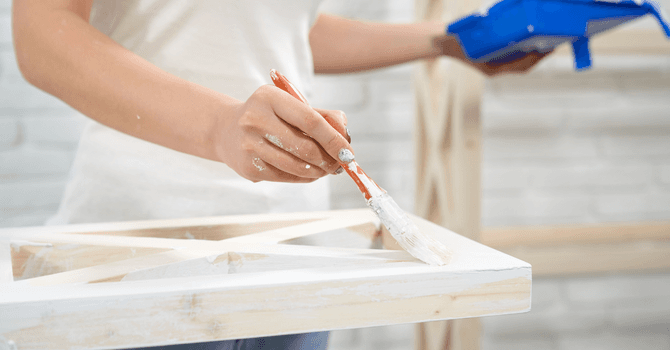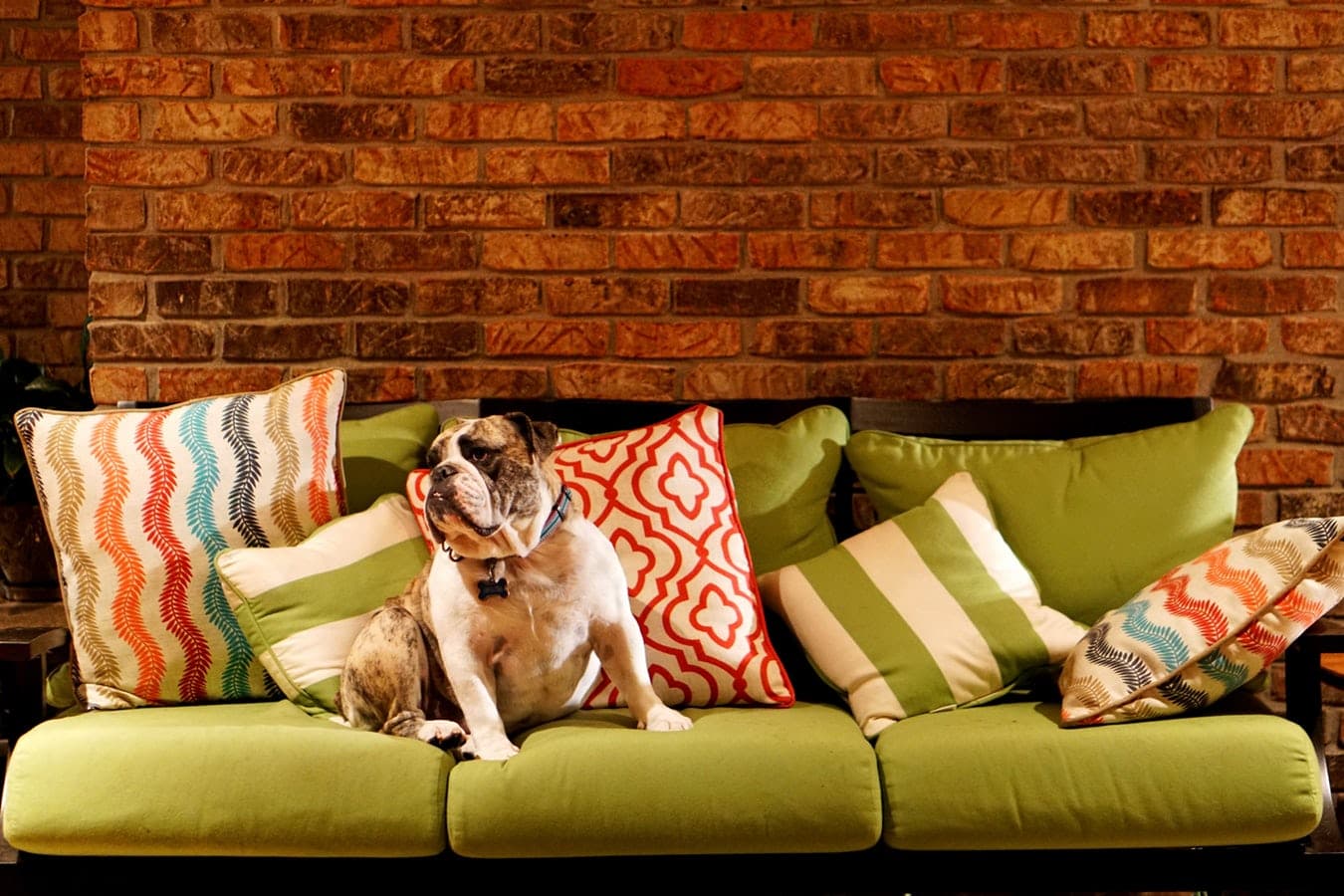
Not a few weeks ago, winter seemed like a distant memory, but not anymore. As the coldest month sets in, it’s crucial to be prepared. When it comes to the inside of your home, preparing for the cold front includes proper insulation, sealing all exterior leading doors and windows, applying weather-stripping, and so on.
What about the exterior? Do the above-mentioned weather-proofing methods have an impact at all? Let’s focus on ice and how it can affect the home’s exterior walls, but more specifically, your roof.
Think back to last winter. Could you spot icicles dangling from your gutters? If so, it could be indicative of a bigger issue: ice damming. Ice dams are large chunks of ice that hang on the edge of your roof and can be detrimental when melting.
Want to learn more about ice damming and prevention methods? Keep reading for more insight.
How Does Roof Ice Damming Happen?

Source: Canva
As mentioned in our introduction, ice damming is a build-up of ice and snow on a rooftop’s edge, pointy in shape. Ice dams make it so that snow continues to build up, further blanketing the rooftop and unable to slide off. With nowhere to go, the snow still melts but might start leaking through the roof and into your home. This can cause significant damage to everything in its way, including walls, ceilings, insulation, as well as furniture and floors.
So, what causes ice dams? It depends on your home, and how it interacts with significant snow build-up on its rooftop. Ice damming includes two necessary conditions: snow build-up and a rooftop temperature that is above freezing. In other words, a decent amount of rooftop snow paired with a discrepancy between the temperature outside and the rooftop’s.
If your roof has “hot spots,” the snow blanketing these areas will melt faster than snow found in other areas. The melting snow then flows toward the solid snow. The melted snow will freeze again, creating ice dams. However, the ice dams will solely expand if snow keeps melting in said areas and freezing again. As water gathers on your rooftop, it might seep into the smallest of cracks and grooves, compromising the integrity of your roofing. If your house has an attic, it’ll find its way into it, too.
How Does Indoor Heat Seep Into a Roof?

Source: Canva
The temperature inside your home directly impacts that of your roof. Indoor heat travels up to the rooftop in three ways:
Conduction
Convection
Radiation
Conduction occurs when heat transfers to solid objects, such as walls, ceilings, etc. The rising air around your home carries heat, which is then transferred via convection. Additionally, heat can be transferred to surfaces through electromagnetic waves, introducing radiation. In most homes, heat finds its way to your ceiling through conduction, moving through any gaps found in your home's insulation.
Once the heat is trapped between the insulation and the ceiling, it warms the insulation’s top layer, transferring it to the rooftop through convection. From there, the heat radiates outward. As you might have guessed, this three-step process is what ultimately leads to ice damming.
There are a few key prevention measures homeowners can take to prevent roof ice dams. These measures are paramount to maintaining the integrity of the insulation, ceilings, etc. These steps are also essential for maintaining a comfortable indoor temperature.
How to Prevent Icicles from Lining the Edges of Your Roof

Source: Canva
The most effective way to prevent ice dams from forming on your roof is to maintain a cold temperature. It may sound simple, but there are several key steps to ensure this goal is achieved. Short term, we suggest removing excess snow from your rooftop, especially if you spot leaks inside your home.
Consider using a roof rake after every heavy snowfall. Then, move on to the next steps to reach your long-term insulation goals. If you're climbing onto your roof, make sure to follow safety guidelines.
How to Prevent Heat Loss Through Your Attic
In many homes, excessive hot air escapes through the attic, leading to significant heat loss and making it difficult to maintain a comfortable indoor temperature. As you may already know, heat travelling to and seeping out of your attic can contribute to ice damming.
To prevent ice damming, it's essential to seal any potential draft-prone areas in your attic, such as
Unsealed walls
Gaps in the drywall
Cracks around light fixtures, pipes, and especially around the chimney
Drafts are often hidden behind insulation, so you may need to carefully remove or pull back the insulation to access any unsealed areas, sealing them with water-resistant caulk or foam. It’s best to tackle this project during the cooler months, as attics can become unbearably hot in the summer.
Avoid touching insulation with your bare skin; wear long pants, a long-sleeved shirt, gloves, and make sure to protect your face and lungs to avoid inhaling insulation particles. Sealing any leaks is the first step in preventing ice dams.
Determine the Amount of Insulation in Your Attic
We suggest assessing the thickness of the insulation material in your attic while you’re there. If you have less than 8 inches, add more. Also, blown-in cellulose and fibreglass insulation work better than hand-placed batts.
Opt for such materials if you have a serious case of ice damming. Installing new insulation takes some know-how, so consider hiring a professional if you’re not feeling up to the task.
Limit Ice Damming for Safety and Peace of Mind
Preventing ice dams on your roof is essential for maintaining the integrity of your home and ensuring safety around your property. The importance of proper insulation, adequate ventilation, and regular roof maintenance is widely underestimated. These preventative measures not only protect your home’s structure but also guard against potential damage, giving you peace of mind as you face the harsh realities of winter.
FAQ Rooftop Ice Dams
What are the dangers of ice damming?
Ice dams can lead to water seeping beneath roofing shingles, damaging walls and ceilings. It also makes for an additional load on the rooftop, potentially warping the gutters and damaging the framework. Moreover, falling chunks of ice pose a serious hazard to homeowners and passers-by alike.
Can ice dams cause water leaks?
Yes, ice dams can prevent normal water runoff, forcing it to build up beneath the roofing shingles and seep inside the roof. The latter can lead to water ingress in the insulation, walls, and ceilings, fostering mould growth and compromising the building’s integrity.
How to remove ice from gutters?
To clear your gutters, start by removing excess rooftop snow with a snow rake to limit water build-up. Then, stuff de-icing salts in nylon socks, placing them directly inside the gutter and downspouts to gradually melt the ice. Avoid using road salts, as such a product could damage the aluminum. If the ice is too thick, pour warm water in obstructed areas or hire a professional to avoid damaging your eavestroughs.
How to remove ice dams without damaging the roofing?
Avoid using metallic tools, such as a shovel or hammer, which will likely damage the shingles. You can try the de-icing sock method—a nylon sock stuffed with calcium chlorine, lining the edge of the roof, gradually melting the ice. Also recommended: using a snow rake to remove excess snow and limit ice damming.
When should you call a professional to remove ice dams?
If the ice dam is too thick or in a hard-to-reach area, it’s best to hire a rooftop snow removal professional. Moreover, if you spot water ingress, ceiling cracks, or warped gutters, the hired expert can assess the damage and prevent further problems down the line.
Looking for something else?
Related articles
The latest industry news, interviews, technologies, and resources.

Cynthia Pigeon
•07 Nov 2023
Techniseal® is a Canadian company that has for the past four years served the construction industry. They offer a range of products for elastomeric roof coatings. Not only are they one of the leading partners in roof repairs and maintenance, but their products are highly regarded by professionals in Quebec.

Cynthia Pigeon
•07 Nov 2023
Typically, the roof is the largest surface of a building. And, because of that, contractors are awarding more importance to this structural element during construction projects. That said, the inverted roof is one of the most durable and dependable options available.

Editorial Team
•13 Jul 2020
A child’s bedroom is a room in the house where people dare to give free rein to their imagination, offering it to the little ones who live there. It’s a place where you can dare to experiment with bright colours, dynamic patterns and furniture that invite play.

Paul Riopel
•14 Jan 2025
The renowned DIY projects, varying in complexity but always inspiring, are steadily growing in popularity. While there's something for every taste, furniture restoration projects are undoubtedly among the most appreciated. Whether it's a century-old chest of drawers or a worn-out kitchen cabinet being given a second life, there are plenty of possibilities.

Amanda Harvey
•31 Mar 2025
Unanticipated noises in the wrong place at the wrong time can be jarring, stressful, and annoying. The best way to deal with it is soundproofing at the source.